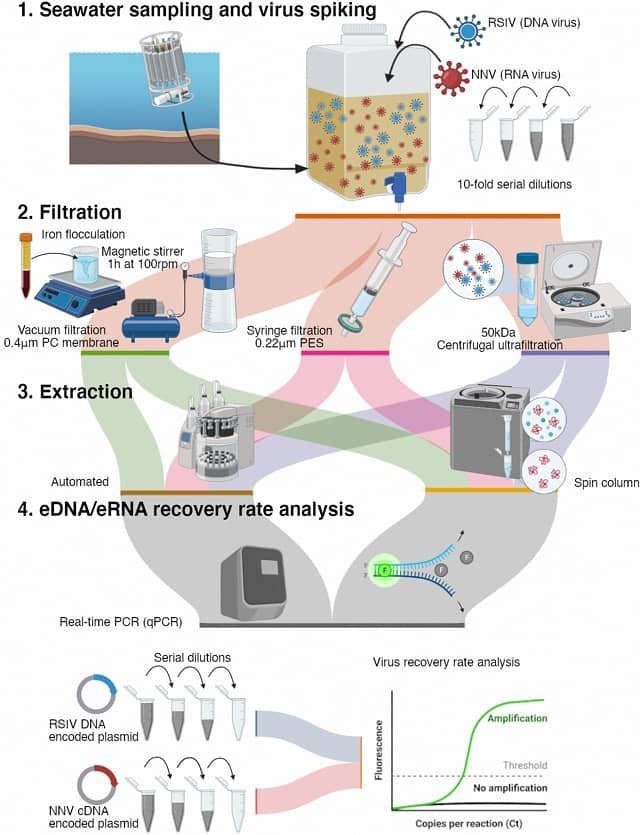Australia.- A James Cook University scientist is using a breakthrough genetic technology to help aquaculture farmers detect disease outbreaks early.
JCU researcher Giana Gomes said diseases account for around 40% of lost aquaculture production globally, at a cost of around US $102 billion per year.
By using the revolutionary eDNA method, it’s possible to reveal which parasites and fishes live in a body of water – just from testing a small amount of water.
“It’s a molecular technique similar to that used by criminal forensic units, where they might identify DNA from a crime scene by testing a drop of blood or saliva,” she said.
Mrs Gomes said that clinical signs of disease outbreaks in aquaculture are often only picked up too late when infections are already in advanced stages.
“But with eDNA methodology we’re able to identify which parasite and how much of it is present and help farmers identify potential disease threats before animals get infected,” she said.
Her latest paper coupled eDNA sampling with fish production data and water conditions to try and discover key environmental drivers of disease outbreaks.
Stay Always Informed
Join our communities to instantly receive the most important news, reports, and analysis from the aquaculture industry.
“We focused on a species of parasite that causes chilodonellosis – a disease which kills around 10% of fish in affected farms within two to three days. It’s especially challenging as outbreaks can occur without warning,” she said.
The team found they could detect the parasite before the outbreak of disease and that elevated water temperature encouraged the disease to spread.
“Our study only tested water quality once a month. But even then there were significant correlations between abundance of the parasite and subsequent fish deaths,” said Mrs Gomes.
“If we can get that to a point where farmers are using eDNA methods to test their water once a week they should be able to put in place preventative health measures and make early interventions at the first sign of trouble.”
She said the use of eDNA methodology for commercial purposes is already available at JCU’s Tropical Water & Aquatic Ecosystem Research (TropWATER) unit, but it’s mainly used for the detection of invasive species such as tilapia.
“Detection of parasites using eDNA in aquaculture is still new to Australia. If farmers are interested in using this technology on their farms they can contact our research team to discuss potential projects,” Mrs Gomes said.
Contact:
Giana B Gomes
Email:giana.bastosgomes@my.jcu.edu.au
Source: JCU
Reference:
Giana Bastos Gomes, Kate S. Hutson, Jose A. Domingos, Catherine Chung, Scott Hayward, Terrence L. Miller, Dean R. Jerry. Use of environmental DNA (eDNA) and water quality data to predict protozoan parasites outbreaks in fish farms. Aquaculture, Volume 479, 1 October 2017, Pages 467–473. https://doi.org/10.1016/j.aquaculture.2017.06.021
http://www.sciencedirect.com/science/article/pii/S0044848617307615
Editor at the digital magazine AquaHoy. He holds a degree in Aquaculture Biology from the National University of Santa (UNS) and a Master’s degree in Science and Innovation Management from the Polytechnic University of Valencia, with postgraduate diplomas in Business Innovation and Innovation Management. He possesses extensive experience in the aquaculture and fisheries sector, having led the Fisheries Innovation Unit of the National Program for Innovation in Fisheries and Aquaculture (PNIPA). He has served as a senior consultant in technology watch, an innovation project formulator and advisor, and a lecturer at UNS. He is a member of the Peruvian College of Biologists and was recognized by the World Aquaculture Society (WAS) in 2016 for his contribution to aquaculture.



